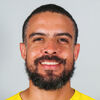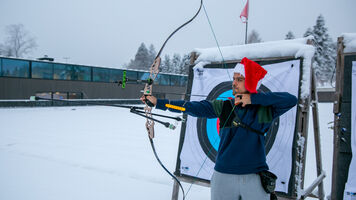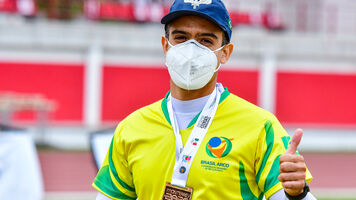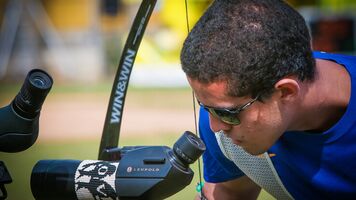Bernardo’s blog: Adjusting to remote competition during the COVID-19 pandemic
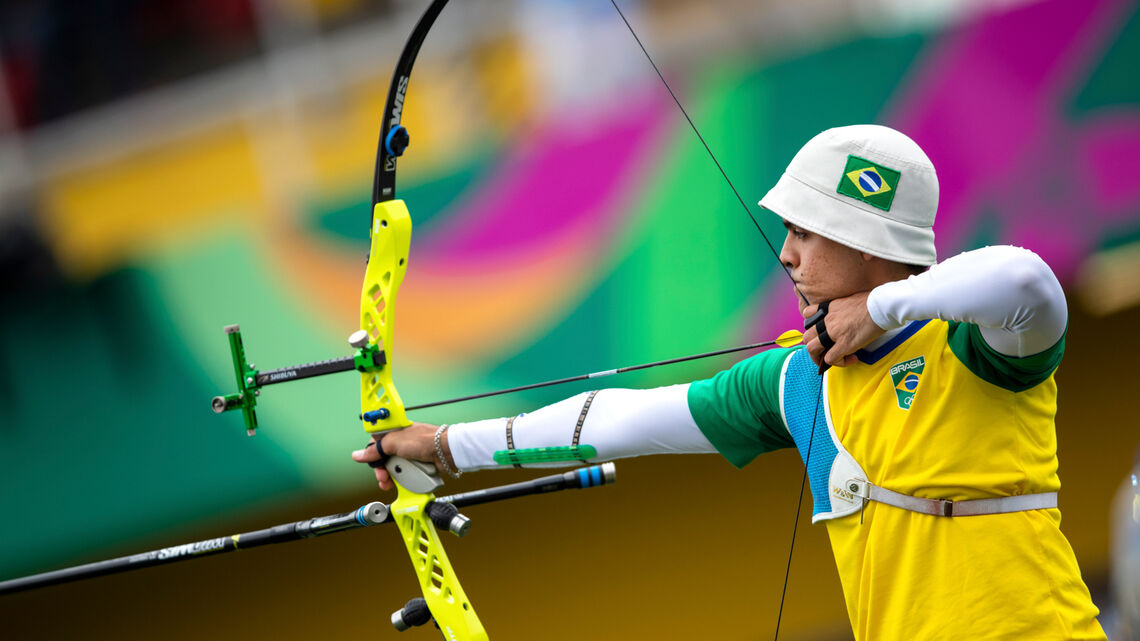
This blog is written by Bernardo Oliveira, giving an insight into his life as an elite archer with the Brazilian national team.
Whenever Chris Wells texts me, I know it’s something far from ordinary. He was asking me whether I'd like to shoot in the Lockdown Knockout. “Sure! I’m in!”
Who would reply anything different, especially at a time when there are no competitions? I just had to sort out how I would meet all the requirements, the biggest issue being the place in which I would shoot.
Clubs and ranges had been closed all across Brazil, but I am lucky that I can shoot at my father’s house. The only bad thing was that I couldn’t rely on the internet there since he lives in the rural area around Brasilia, so I reached out to a close archer friend, who lives in a house in the urban area.
He kindly accepted that I shoot the tournament at his place, of course, taking all the necessary precautions. And the fact that he has got a target in his yard made everything much easier.
Right away, I switched my focus to 18 metres. My coach adapted the drills that we do at 70 metres and I got to work.
Training consistently at short range was a first for me. Here in Brazil, we don’t focus a lot on indoor competitions. The main reason is the weather. Even in winter where I live, temperatures don’t go below 10 degrees centigrade, so putting all my attention on this distance for two weeks was entirely new.
It occurred to me that this competition had the unique feature of the archers being able to hear the commentators on the broadcast all the time, so during my training, I started watching the matches of the compound Lockdown Knockout with the headphones on.
I was just trying to get used to hearing Karim Bashir and Chris saying things like, “he needs to shoot a 10 right now” at full draw. And I think it worked because whatever chatter was going on, it didn’t bother me in my match against Crispin Duenas.
It was decided that my match would be the last one in order to make sure that the special targets they’d printed could arrive in Brazil on time. It was the perfect call because I got the target faces one day before my match.
I had them delivered for the match, which was the most important thing. But unfortunately, I did not have time to practise on them, except during the warm-up before competing.
However, I did have a notion of what it was like to shoot at the 12-ring. Crispin had measured the little white dot and shared with the other participants that it was 15 millimetres wide. And one of my training drills was shooting at a smaller target which has a 19-millimetre-wide 10-ring.
So, from then on, I could see whether my shots would’ve been good enough for a 12 or not.
It was staggering to see that very good shots most of the time weren’t enough. They had to be close to perfection. And the need to aim off the yellow wasn’t really a concern since I frequently do drills aiming off.
During imagery exercises, I tried to think of the scenarios where it would be worth going for the 12. And it turned out to be what we saw during the actual matches: only when it was utterly needed.
I decided to shoot my qualification round during a live on my YouTube channel. The goal was to get the feeling as close as I could to what I would get during the matches.
And it was great that I did this because I had to solve a problem that would certainly appear later, which was the devices overheating under the sun. I moved the target a little bit so that the whole set-up would be under the shade of a tree – and I was good to go.
The qualification went okay in the first half and in the second one, things got worse, especially shooting an end of 25 points to finish.
The top target was great, only one nine. The bottom two had way more 9s and if that wasn’t enough, there were also reds. As the qualification round progressed my shot got stiffer and stiffer, and the more I thought about it, the worse it got.
Well, having done qualification, I had a clearer picture of where I stood regarding competitions. And I had a better idea of what to focus on for the following days: shot rhythm and the bottom targets.
Then, the quarterfinals came. I was feeling very anxious and excited about this experience that I was sure would be one of a kind. I felt like in the movie The King's Speech: nobody around me but far from lonely, knowing a lot of people were watching us.
In fact, I was very surprised with the attention it attracted here in Brazil. The only time I had more eyes on me because of a competition was during the 2016 Olympic Games in Rio. No wonder, since the number of live sporting events has plummeted during the pandemic. All the praise to World Archery for coming up with the idea and putting it all together so quickly and so seamlessly.
To me, it was very thrilling and exciting. It felt just like at any other international competition we shoot, including my struggles.
The match didn’t start quite how I wanted it to, even though I did shoot a 12. In the end I found my way; I put my shot together and shot what I’m capable of. The problem is that when you face archers like Crispin, there is no time for setting-up. When I managed to react, it was too late.
Once again, I realise that it all comes down to how I face the situation.
Nothing changed in terms of how I was feeling. The only difference between the beginning and the end of the match was that I simply managed to narrow my focus and do my thing. And just this simple insight was worth the entire experience.
After it was all over, I just felt so thankful for being able to compete against some of the best in the world during this strange period. The usual competition schedule can be stressful at times but now I see that the competitiveness is what makes me go to the archery field every day.
Shooting good arrows during a practice session is nice but nothing compares to shooting well at a tournament when there’s something at stake.
Bernardo Oliveira will compete in his second remote international tournament of 2020, the Online Archery Cup of the Americas, at the end of October. Watch the whole competition live on the World Archery Americas’ Facebook page.
